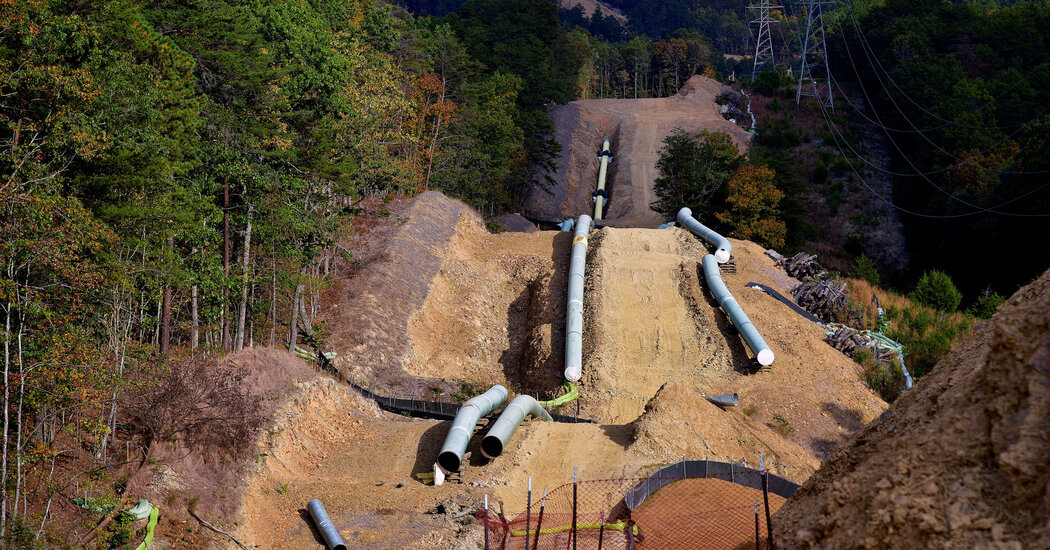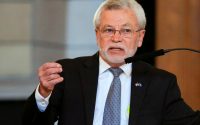Rev. Cecil Murray, Leader Amid Los Angeles Riots, Dies at 94
The Rev. Cecil Murray, a minister who turned a struggling church in Los Angeles into one of the country’s largest congregations, then made it a base to combat the many ills facing the city’s Black population — most notably during and after the 1992 riots — died on Friday at his home in the View Park-Windsor Hills section of Los Angeles. He was 94.
The death was announced by the Center for Religion and Civic Culture at the University of Southern California, where he had taught after retiring from the church.
When Mr. Murray arrived at First African Methodist Episcopal Church in 1977, it was both storied and troubled: It was the oldest Black church west of the Mississippi, but it was loaded in debt and attracted just a few hundred congregants.
Mr. Murray, known as Chip, brought new life to the church. He replaced the traditional choir with a gospel ensemble. His rich baritone voice and entrancing speaking style drew new worshipers. Within a decade he had retired the church’s debt and brought attendance up to about 7,000.
The church was among the most prominent in the city’s Black community, and Mr. Murray was among its most respected religious leaders. Tom Bradley, the city’s first Black mayor, was a member. Presidents, governors and world leaders visited the church, and Mr. Murray led the funeral services for Black celebrities like Mr. Bradley, Ray Charles and Eazy-E.
Celebrity status, though, meant little to him. His focus was the struggling communities of South Central Los Angeles. He created outreach programs to combat gang violence and substance abuse. He brought in investors to support low-income housing, scholarships and home-loan programs.
He could feel the tension building after four white Los Angeles police officers were charged with beating a Black motorist, Rodney King, in 1991. On April 28, 1992, the day before the verdict in the officers’ trial was expected, he set up loudspeakers in the parking lot of his church so neighbors could follow the events.
The next day, the jury found all four men not guilty of assault (one was convicted of using excessive force). A few hours later, an usher came to find Mr. Murray in the church. He brought him outside and pointed south. Flames were rising. Then he pointed at flames to the east, then the west.
By the first night, fires had come within a half block of the church. The fire department refused to deploy in the area unless firefighters’ safety from rock-throwing rioters could be guaranteed.
Mr. Murray assembled some 100 men to stand as a cordon around the fire trucks. He also opened up the church to the Red Cross and its basement to more than 100 people left homeless by the fires.
In the weeks and months that followed, he went on a whirlwind campaign to raise money for rebuilding. He went on “Nightline” and “The Arsenio Hall Show” — Mr. Hall was a congregant — and met with corporate executives, ultimately raising more than $1.5 million.
But he was quick to note that this was only the beginning. More than 50 people died in the unrest, which caused some $1 billion in damage, and he feared that there would be more violence to come soon.
“You feel the thermometer rising,” he told The New York Times in September 1992. “It’s like a fever. This place is like a dog that’s been in a fight. The hairs on his back are still standing up.”
Cecil Leonard Murray was born on Sept. 26, 1929, in Lakeland, Fla., to Janie (Williams) and Robert Murray. His mother died when he was about 3, and his father later moved with Cecil and his siblings, Louise and Edward, to West Palm Beach, Fla., where he worked as a high school principal.
Cecil took to the pulpit early. He was a junior preacher from middle school through his senior year in high school.
It was the era of the Jim Crow South. Cecil and his brother once watched his father confront a group of white men as they harassed several Black people standing in line at a soup kitchen. The men responded by assaulting Robert Murray, then Cecil and Edward, too.
The incident seemed to break something in his father, who grew addicted to alcohol. Mr. Murray said his father’s experience helped guide his own vision for his ministry.
“It’s funny,” he told The Los Angeles Times, “but you don’t remember the weaknesses. You remember the greatness of spirit and the sensitivity that allowed him to absorb the pain. Eventually it destroyed him.”
He graduated with a degree in history from Florida A&M University, a historically Black institution, in 1951, and then entered the Air Force, where he served as a radar intercept officer.
In 1958, while he was at Oxnard Air Force Base, northwest of Los Angeles, his two-seat plane crashed on takeoff. He was pinned in the back but managed to escape, though the pilot suffered fatal third-degree burns.
Before the pilot died, he asked Mr. Murray to visit him in the hospital.
While there, “he told me he had not forgotten me and he was trying to help me,” Mr. Murray told The Los Angeles Times in 2004. “So those two traumas, the depth of his love and the delivery of my life, made me know that I had to live beyond me.”
He married Bernadine Cousin in 1958. She died in 2013. He is survived by their son, Drew.
Mr. Murray left the Air Force in 1961, set on the ministry. He received a doctorate from the Claremont School of Theology in 1964, after which he assumed the pulpit of a tiny church in Pomona, Calif.
He later preached in Kansas City, Kan., and Seattle before joining First African Methodist Episcopal.
In the wake of the riots, Mr. Murray redoubled his outreach efforts. In 2001 he opened the FAME Renaissance Center, which became a base for the church’s social services. It soon oversaw a portfolio of some $400 million in community projects.
Mr. Murray retired from the pulpit in 2004, after which he became a professor at the University of Southern California.
He spent his time training ministers and other church officials in social engagement, coming in for a full day of work every morning until the coronavirus pandemic in 2020. He retired in 2022.
“On Sunday, it’s about saving souls. But on Monday through Saturday, it’s about saving the community,” he told the Knight-Ridder news service in 1995. “I think the church that’s about personal salvation but doesn’t address the needs of the community is blasphemous.”


